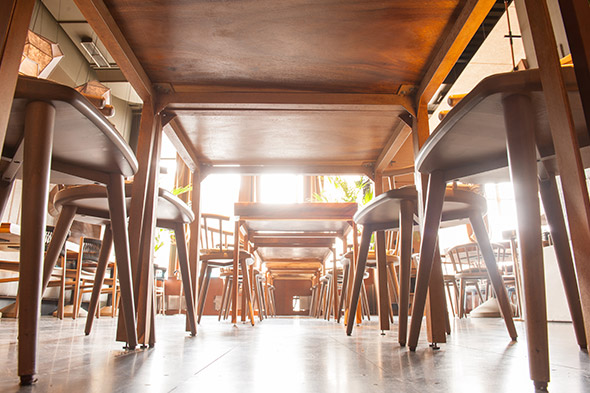 What keeps diners coming back to your restaurant? Here’s a hint: it’s not just the food. In fact, a variety of factors impact whether your restaurant is appealing or off-putting.
What keeps diners coming back to your restaurant? Here’s a hint: it’s not just the food. In fact, a variety of factors impact whether your restaurant is appealing or off-putting.
And while seating may be one of the last things you think about when it comes to restaurant planning, it’s not only one of the first things diners notice, but can make or break their dining experiences.
Let’s take a closer look at six things to consider when selecting seating for your restaurant furnishings.
1. Size
Depending on the size of your restaurant, certain seating options may work better than others. For example, while sizable tables and chairs typically work well in a massive space, compact booths may be more appropriate for smaller dining rooms.
Countertop seating and banquettes, meanwhile, can help you squeeze in even more diners if it works thematically with your concept.
2. Space
Speaking of space, while your goal is to maximize capacity, there should be no sacrifice of traffic flow, diner privacy, and other factors impacted not by the seating itself but by how it fills your space.
One tip? Make sure you know precisely how much space you’re working with before committing to a purchase. After all, the “perfect” furniture quickly becomes anything but if it doesn’t work in your dining area.
Another space-related factor? Maneuverability. If you’re planning on accommodating large parties and events, stocking up on stacking chairs, folding chairs, and portable tables enhance your ability to quickly and easily mix, match and move tables.
3. Design
Fine dining establishments demand different furnishings than fast-casual joints. While cushy booths are perfect for family-friendly restaurants and high-tops make sense in bar areas, neither may work in more upscale settings.
Conversely, while fabric-covered chairs are elegant in romantic dining rooms, they’re a recipe for disaster in boisterous, high-traffic environments where spills and splats are more likely to occur.
Meanwhile, furniture featuring decorative touches may be visually appealing, but their cracks and crevices are much more challenging to keep free of dust, crumbs and debris. Make sure the furniture you choose can be wiped down quickly.
One consistent rule of thumb when it comes to choosing restaurant seating: The easier to clean, the better.
Family restaurants, meanwhile, will want to make sure to have plenty of booster seats and highchairs handy.
4. Comfort
Customers come in all shapes and sizes. Finding furniture designed to comfortably accommodate them all is a critical part of ensuring their comfort. After all, no one enjoys having cramped legs or being wedged into a too-small chair.
If you want to make sure diners return to your restaurant, make sure they’re comfortable. One point worth mentioning? Humans are increasing in stature — both in terms of height and girth.
Bigger may be better when it comes to choosing seating guaranteed to work for everyone. But comfort isn’t just about size. Just how important is comfort? New York Eater has even compiled a list of “New York’s Most Comfortable Restaurant Chairs.”
5. Durability
Commercial restaurant furniture is designed to withstand the wear and tear of restaurant use.
After all, the average restaurant serves hundreds of people every day: That’s a lot of bodies getting in and out of chairs. Choosing commercial furniture ensures that your chairs, booths and bar stools will be up to the task for years to come.
6. Price
Buying cheaply made furniture can be a short-sighted decision, which is why it’s important to keep the focus on quality. However, this doesn’t mean you have to spring for the most expensive seating options either — particularly if doing so ends up eating into your overall budget.
Seek out well-made chairs which meet your basic requirements. And don’t forget to factor in upkeep. Upholstered furniture, for example, will need at least annual professional cleanings.
Today’s diners expect even more from the restaurants they frequent — right down to where they sit.
Why risk alienating them with an uncomfortable or impractical chair before they even get to sample your food? Keeping these six main factors in mind can help you identify restaurant seating options which deliver the perfect blend of form and function while serving as the foundation for a satisfying dining experience.